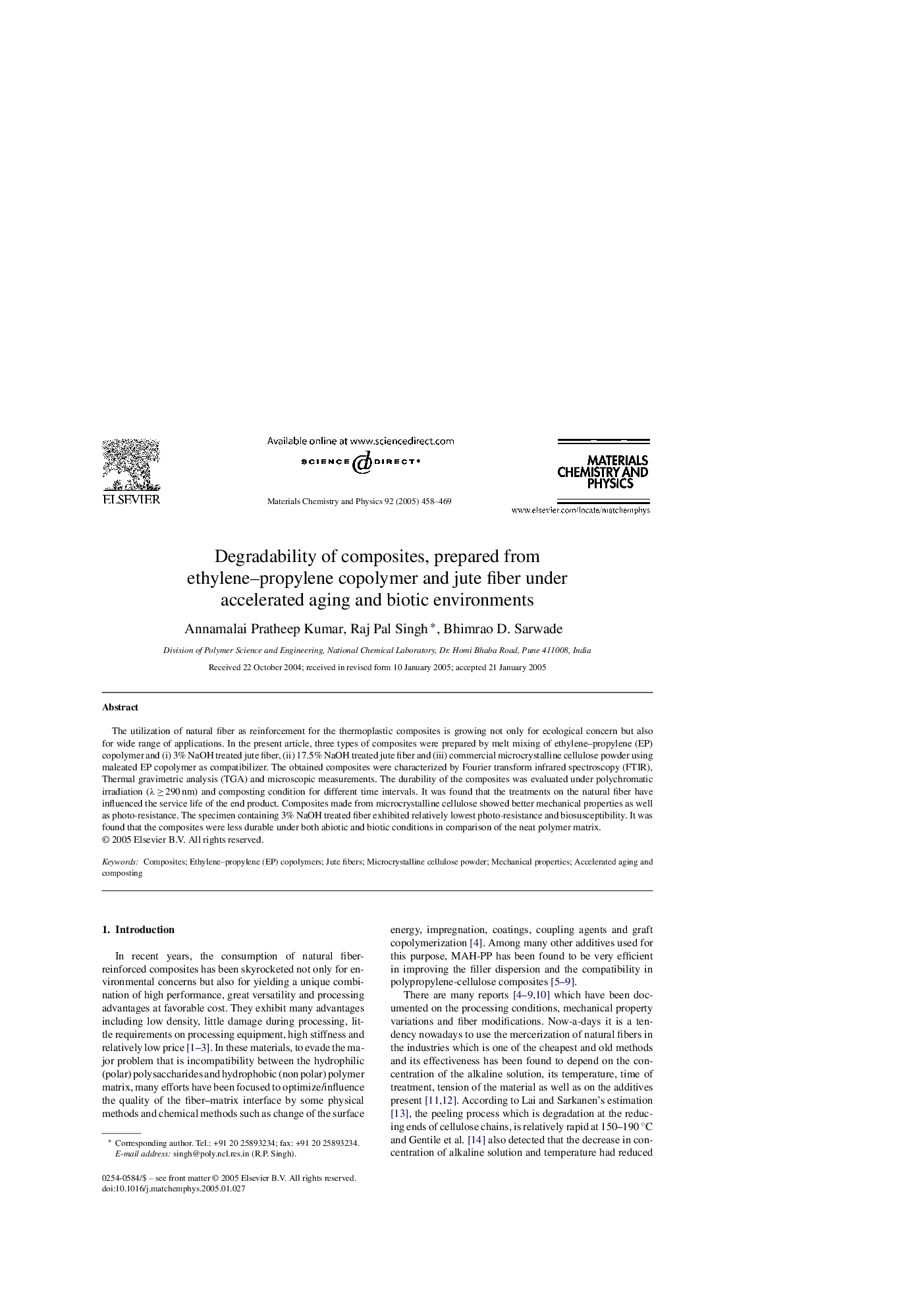| Article ID | Journal | Published Year | Pages | File Type |
|---|---|---|---|---|
| 9783059 | Materials Chemistry and Physics | 2005 | 12 Pages |
Abstract
The utilization of natural fiber as reinforcement for the thermoplastic composites is growing not only for ecological concern but also for wide range of applications. In the present article, three types of composites were prepared by melt mixing of ethylene-propylene (EP) copolymer and (i) 3% NaOH treated jute fiber, (ii) 17.5% NaOH treated jute fiber and (iii) commercial microcrystalline cellulose powder using maleated EP copolymer as compatibilizer. The obtained composites were characterized by Fourier transform infrared spectroscopy (FTIR), Thermal gravimetric analysis (TGA) and microscopic measurements. The durability of the composites was evaluated under polychromatic irradiation (λ â¥Â 290 nm) and composting condition for different time intervals. It was found that the treatments on the natural fiber have influenced the service life of the end product. Composites made from microcrystalline cellulose showed better mechanical properties as well as photo-resistance. The specimen containing 3% NaOH treated fiber exhibited relatively lowest photo-resistance and biosusceptibility. It was found that the composites were less durable under both abiotic and biotic conditions in comparison of the neat polymer matrix.
Related Topics
Physical Sciences and Engineering
Materials Science
Electronic, Optical and Magnetic Materials
Authors
Annamalai Pratheep Kumar, Raj Pal Singh, Bhimrao D. Sarwade,
